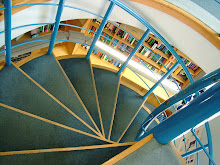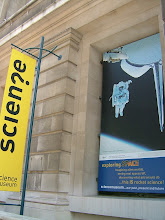
1957: Sputnik satellite blasts into space
A Russian satellite has been launched into space - the first man-made object ever to leave the Earth's atmosphere. The Russian news agency, Tass, said the satellite Sputnik was now 560 miles (900 kilometres) above the Earth and circling it every hour-and-a-half. Scientists predict the metal sphere will eventually burn up in the atmosphere but they hope it will send important data back to Earth before doing so. The Soviet Union and the USA have both committed to launching satellites for research as part of the International Geophysical Year (IGY).
Delegations from both countries' IGY committees were at a reception at the Russian embassy in Washington when news of Sputnik's launch came through. The chairman of the American IGY committee, Dr Joseph Kaplan, congratulated the Russians on a "remarkable achievement".
The leader of the Russian delegation, Dr A A Blagonravov, who is believed to have been closely involved with the preparations for the launch, described Sputnik as "the simplest kind of baby moon". He attributed its weight - 180lb (83.5kg) - largely to heavy batteries.
'Nothing to fear' The satellite's weight has led some American experts to speculate that the rocket which launched it might also be capable of carrying a nuclear weapon thousands of miles.
The fact that Sputnik is expected to fly over the US seven times a day has also caused unease.
There have already been calls for an immediate review of US defences, given the implications of the technological leap ahead by a political enemy. But Dr Blagonravov said no-one had anything to fear from the Soviet satellite programme. "It will keep everyone too busy watching the instruments to think about anything else," he said. President Eisenhower has been informed of the Russian success. But he said the news would not lead the US to accelerate its own satellite programme. The first US launch is expected next month.
A Russian satellite has been launched into space - the first man-made object ever to leave the Earth's atmosphere. The Russian news agency, Tass, said the satellite Sputnik was now 560 miles (900 kilometres) above the Earth and circling it every hour-and-a-half. Scientists predict the metal sphere will eventually burn up in the atmosphere but they hope it will send important data back to Earth before doing so. The Soviet Union and the USA have both committed to launching satellites for research as part of the International Geophysical Year (IGY).
Delegations from both countries' IGY committees were at a reception at the Russian embassy in Washington when news of Sputnik's launch came through. The chairman of the American IGY committee, Dr Joseph Kaplan, congratulated the Russians on a "remarkable achievement".
The leader of the Russian delegation, Dr A A Blagonravov, who is believed to have been closely involved with the preparations for the launch, described Sputnik as "the simplest kind of baby moon". He attributed its weight - 180lb (83.5kg) - largely to heavy batteries.
'Nothing to fear' The satellite's weight has led some American experts to speculate that the rocket which launched it might also be capable of carrying a nuclear weapon thousands of miles.
The fact that Sputnik is expected to fly over the US seven times a day has also caused unease.
There have already been calls for an immediate review of US defences, given the implications of the technological leap ahead by a political enemy. But Dr Blagonravov said no-one had anything to fear from the Soviet satellite programme. "It will keep everyone too busy watching the instruments to think about anything else," he said. President Eisenhower has been informed of the Russian success. But he said the news would not lead the US to accelerate its own satellite programme. The first US launch is expected next month.









沒有留言:
張貼留言